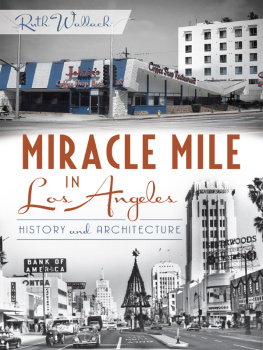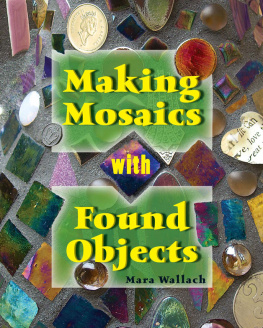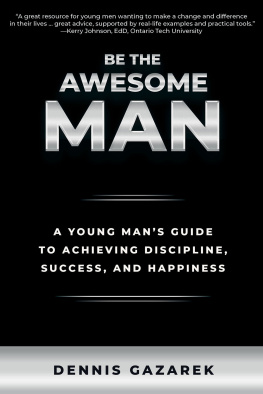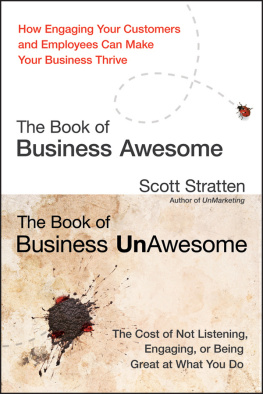Further Praise For A Dangerous Master
It would be hard to find a more thoughtful, better prepared guide through the difficult terrain of emerging technologies than Wendell Wallach, as he demonstrates yet again in this comprehensive, erudite, and highly readable book. This is a must-read volume.
BRADEN ALLENBY,
professor of civil and environmental engineering, Arizona State University
Wendell Wallach has done all of us a service. He has alerted us in detail, and provocatively, that there are dangers as well as gains in our national romance with innovative technologies. His account of the troubled technology romance is well told, and it is one we need to hear.
DANIEL CALLAHAN,
president emeritus, The Hastings Center
A Dangerous Master does a masterful job of describing in an accessible but precise manner the emerging technologies, and their profound and fascinating ethical and social implications.
GARY MARCHANT,
regents professor of law, Sandra Day OConnor College of Law
ALSO BY WENDELL WALLACH
Moral Machines: Teaching Robots Right from Wrong
(with Colin Allen)
Silent Learning: The Undistracted Mind
(produced by Journey Publications, a boutique press in the 70s)
The Library of Essays on the Ethics of Emerging Technologies
(series editor; forthcoming in the second half of 2015 from Ashgate Publishing Ltd.)
Emerging Technologies: Ethics, Law, and Governance
(with Gary Marchant; a volume in the Ashgate library coming out in the later half of 2015)
Machine Ethics and Robot Ethics
(with Peter Asaro; another volume in the library coming out in the later half of 2015)

CARTOON CREDITS
Page 16: P. Clay Bennett / 2001 The Christian Science Monitor (www.CSMonitor.com). Reprinted with permission.
Page 92: Jim Day, How Electric Cars Really Work. Reprinted with permission from Cagle, Cartoons, Inc.
Page 151: Sidney Harris then a miracle occurs. Reprinted with permission from ScienceCartoonsPlus.com
Page 252: Scott Santis / 2001 Tribune Content Agency, LLC. All Rights Reserved. Reprinted with permission. Scanned Image courtesy of the Rob Rogers Collection, The Ohio State University Billy Ireland Cartoon Library & Museum
Copyright 2015 by Wendell Wallach
Published by Basic Books
A Member of the Perseus Books Group
All rights reserved. Printed in the United States of America. No part of this book may be reproduced in any manner whatsoever without written permission except in the case of brief quotations embodied in critical articles and reviews. For information, address Basic Books, 250 West 57th Street, New York, NY 10107.
Books published by Basic Books are available at special discounts for bulk purchases in the United States by corporations, institutions, and other organizations. For more information, please contact the Special Markets Department at the Perseus Books Group, 2300 Chestnut Street, Suite 200, Philadelphia, PA 19103, or call (800) 810-4145, ext. 5000, or e-mail special..
Text design by BackStory Design
Cataloging-in-Publication data for this book is available from the Library of Congress.
ISBN: 978-0-465-04053-7 (eBook)
10 9 8 7 6 5 4 3 2 1
For Gert, who wanted his children to follow him into medicine or become scientists. However, he spent our time together at the dinner table discussing history, politics, and ethics.
To the members and the presenters at meetings of the Technology and Ethics study group at Yale Universitys Interdisciplinary Center for Bioethics. You have been my mentors.
CONTENTS
Technology is a good servant but a dangerous master.
CHRISTIAN LOUS LANGE
If we dont change direction soon, well end up where were going.
PROFESSOR IRWIN COREY
THE SOFT-SPOKEN AND CELEBRATED BIOCHEMIST OTTO RSSLER seemed an unlikely candidate to make a dramatic public announcement that starting up the Large Hadron Collider (LHC) would mark the last days of planet Earth. At a January 2008 gathering in Berlin, Germany, he proclaimed that the LHC, the largest particle collider in the world, could plausibly create a tiny black hole into which the planet would disappear.
Rssler was not alone; a few other scientists joined his campaign to stop the LHC from being turned on. They were a distinct minority.
It would be easy to dismiss Otto Rssler as a crazy scientist, attention seeker, or misguided alarmist unwilling to accept the consensus of the vast majority of his peers. However, years before he criticized CERN (the European Organization for Nuclear Research that manages the LHC) I met Otto at three academic conferences in Baden-Baden, Germany. He impressed me as an unusually gentle, thoughtful, and careful man, and not a person whose opinion I could ignore easily. Rssler was also expressing concerns that were worth heedingor at least hearing out.
When physicists describe black holes, they commonly use the example of a collapsed star, which is compressed into a small, dense mass that has so much gravitational force, not even light can escape its pull. The creation of tiny black holes by the collision of high-energy particles in the LHC is theoretically possible, and Rssler implored CERN to suspend any operation of the LHC until physicists conducted more preliminary research to prove that a dangerous black hole could not be created. On August 26, 2008, ten days before the LHC was to be turned on, citizens of the EU filed a legal suit at the European Court of Human Rights in Strasbourg to halt its use.
Large science projects, particularly those like the LHC that are funded by public money, have always been a lightning rod for criticism. Everyonefrom science detractors, to kooks, to those who argue the money could be spent better elsewhereseems to have an opinion as to why such projects are not worthwhile. This is especially true for experiments in theoretical physics whose results may lack any immediate application. Yet even while their theories are difficult to understand, the physicists involved with the LHC have been successful at convincing government leaders of the researchs importance. Twenty individual countries plus the European Union provided the primary funding for CERN. In addition, six observer states (including the U.S.) contributed to build the LHC. By the time of the 2008 lawsuit, more than six billion dollars had already been spent. With so much public money allocated to study their theories, one can easily imagine the pressure on the lead scientists at CERN to justify the value of their research. Any decision by CERN officials to halt further work would have required tremendous courage.
The proposed danger was serious and eminent scientists voiced their concerns. It would have been totally irresponsible for CERN to dismiss that danger out of hand. A committee of physicists was appointed to study the validity of the theories Rssler employed to challenge the safety of the LHC. This approach is accepted practice among scientists, but the determinations of such committees are based upon methods that are incomprehensible to the wider publicwhose fate was, in this case, potentially at risk. One important reason the committee rejected the proposed danger was their conclusion that any tiny black hole created would be unstable and would decay in a matter of moments. A short-lived black hole could pose no real threat. The disintegration would be due to release of energy in the form of Hawking radiation (proposed by and named after Stephen Hawking). Most physicists embrace the existence of Hawking radiation, but it had not been proven because there was no equipment sensitive enough to perform the necessary experiments. In other words, experiments designed to test a collection of theories, including the existence of the elusive Higgs boson, were declared dangerous according to another theory (Rsslers), and that other theory was rejected by scientists because of one additional theory (Hawking radiation) that was widely accepted but also unproven.
Next page














